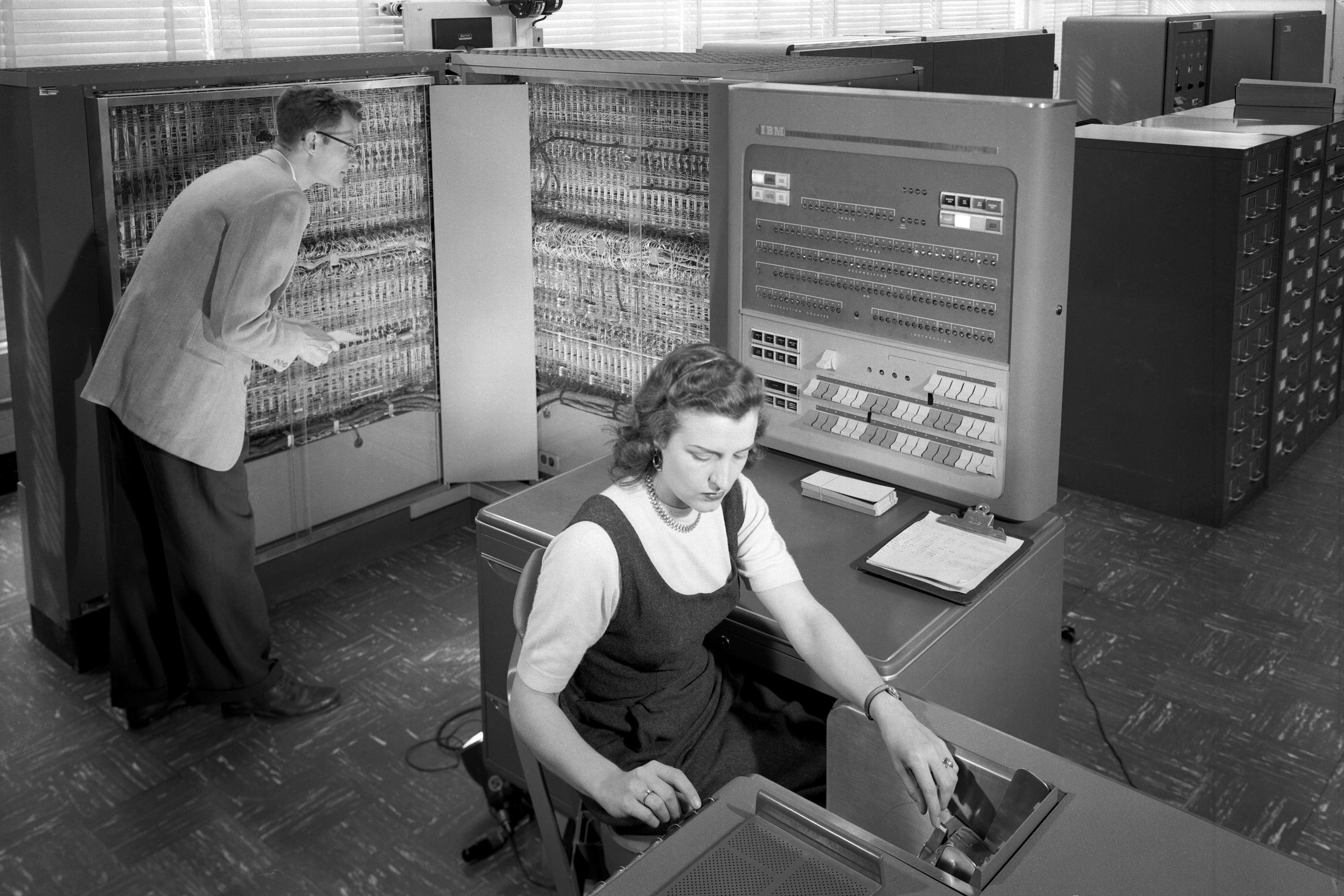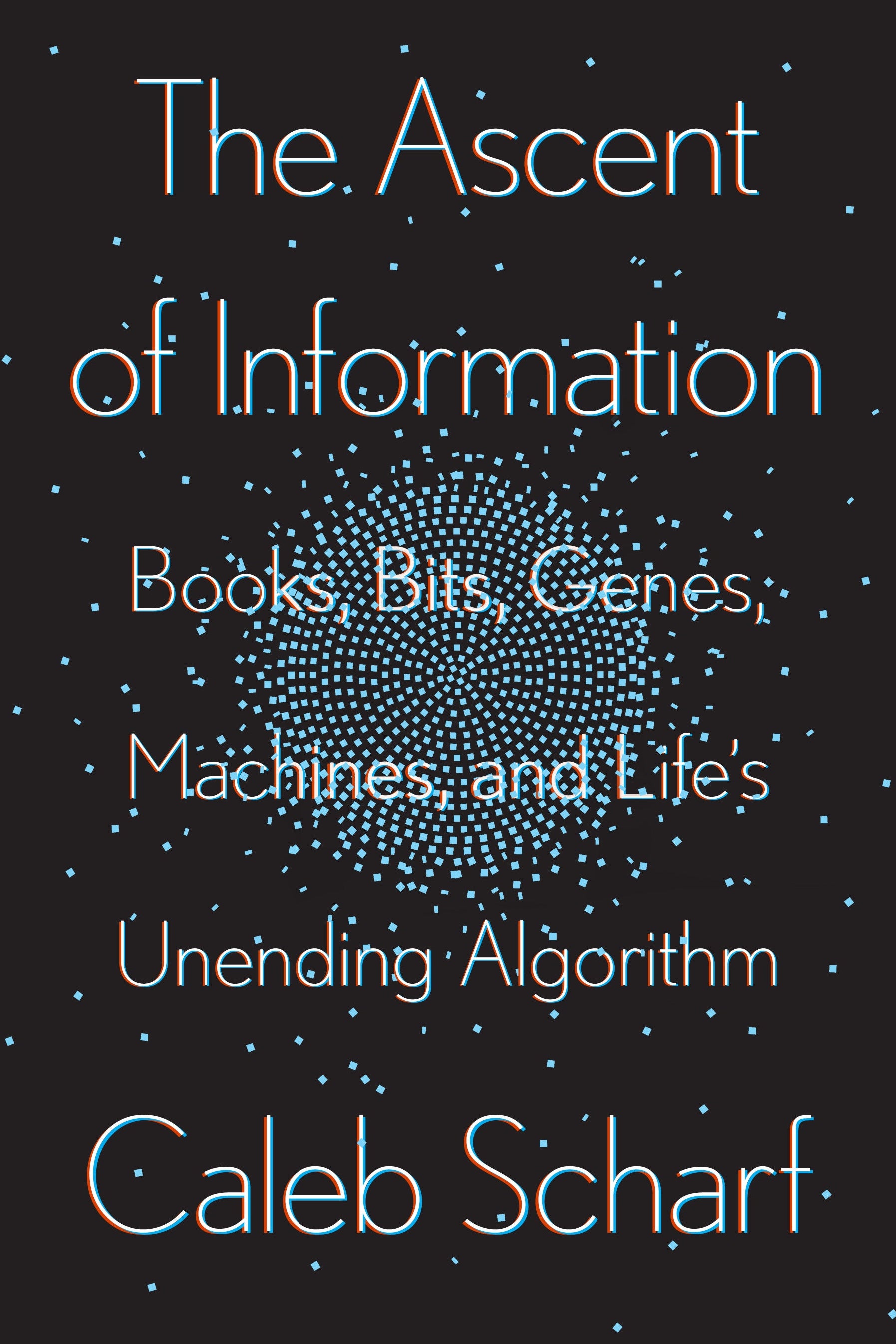Slate has relationships with various online retailers. If you buy something through our links, Slate may earn an affiliate commission. We update links when possible, but note that deals can expire and all prices are subject to change. All prices were up to date at the time of publication.
From The Ascent of Information: Books, Bits, Genes, Machines, and Life’s Unending Algorithm by Caleb Scharf published on June 15, 2021 by Riverhead, an imprint of Penguin Publishing Group, a division of Penguin Random House LLC. Copyright © 2021 Caleb Scharf.
In 1889, a mechanical engineer named Herman Hollerith persuaded the United States government to use machine‑readable paper punch cards and electric counting machines to conduct the national Census, saving the U.S. Treasury about $5 million in the costs of handling data for 62 million people. By 1891 Hollerith was designing machines to be used in censuses in Canada, Norway, and Austria, as well as by railroads to tabulate fare information. As a result, Hollerith’s fledgling company quickly became part of the growing data landscape, and eventually, in 1924, it became the International Business Machines Corporation, or IBM.
The core technological idea that Hollerith exploited had originated in the early 1700s with punched holes in paper tape that could govern the movement of thread in automated weaving looms. This mechanical hack meant that complex patterns could be reproduced quickly and efficiently in all kinds of textiles. And during the 1800s punched paper grew beyond looms into a more general technique for information storage and manipulation.
By 1937, IBM was churning out an astonishing 10 million blank punch cards per day. In the first half of the 20th century, these simple paper cards, designed to take a precise grid of punches (literally rectangular holes) of 80 columns by 12 rows, were used in an enormous variety of business and governmental applications, from accounting records to personnel files. Their tiny papery voids were data manifested in the physical world.
For a time, punch cards were a dominating force in humanity’s dataome. That’s what I’ve come to call the mass of data humanity creates and carries, other than our genes—everything from the plays of Shakespeare to the memories held in the neurons of your brain. This is one of the most peculiar and possibly unique features of humans: We carry vast amounts of information externally to our biological forms. That data not only reflects humanity’s actions, but drives them as well. And for a while, the 20th century dataome was drowning in punch cards.
In World War II the cryptographers working at Bletchley Park in England would routinely use about 2 million punch cards a week to store their decryptions of Nazi communications. But that wasn’t the peak: That came in 1967, at which point the U.S. alone consumed approximately 200 billion cards per year. By then punch cards were also the common medium for programming and interrogating fully digital computers.
Extremely critical tasks like the core programming of NASA’s Apollo Project’s Guidance Computer, whose design was overseen by the computer scientist Margaret Hamilton as director of software engineering at MIT’s Instrumentation Laboratory, were transposed onto IBM paper punch cards. This process was entirely standard routine for software development. A programmer would write code by hand on special coding sheets—preformatted forms. Those coding sheets would then be converted into physical punch cards using a keypunch machine, essentially a typewriter attached to a powered machine equipped to punch the holes in the cards. Often this procedure would take place twice, where a second human operator would punch the cards again in a verifier machine that compared this new set with the first to catch any errors. Finally, the cards would be fed to a card‑reading machine that would convert the holes to electrical signals, physically compiling the data into the electronic computer.
All of this meant that using a computer was a physical chore—from making the cards to carrying a stack of them to the card reader and waiting your turn to program the computer. In software parlance this was a batch‑mode process with you as a part of the batch. And as with all of our books and printed materials, punch cards also represented a significant energy burden. Factoring in the paper production, the transport, the machines, and the human effort, it’s likely that in the late 1960s an equivalent of somewhere between 1 percent and 10 percent of the national coal burning energy budget in the U.S. was going into the production and use of punch cards.
The fascinating thing is that punch cards, perhaps even more than ordinary printed matter, demanded very specific human behaviors. The whole thought process of writing, testing, and using computer software was, for a while, beholden to the quirks of a format that had its origins in how we mass‑produced pretty textiles. There was also a direct physical relationship to the data as stacks of cards were carried and deposited, organized and discarded. For a while in the 1960s, it must have seemed like our future was truly that of a cog in a giant electromechanical organism. But by the mid‑1980s, punch cards went pretty much extinct. Even IBM wasn’t making them anymore. Instead, the cards and the machines that used them became relegated to specific legacy needs. Magnetic tapes and disks and solid‑state computer memory became the norm. These new media were vastly more compact, faster, and more reliable. Critically, these storage techniques also lent themselves to a much more natural approach to data. Imagine trying to record and digitize an orchestral performance with punch cards. Not only would this be spectacularly slow, the machinery would need to be highly customized. By contrast, that music can be almost seamlessly and finely digitized and recorded onto magnetic tape or a silicon memory—with an enormously more accommodating set of limitations on speed and capacity. The barrier between the dataome and the physical world, and us, was magically lowered. Punch cards enabled the rise of the digital world, but they were also outdone by it.
There is a striking similarity between the history of punch cards and the kinds of patterns we find in evolutionary biology and the ebb and flow of species. That is not necessarily a profound thing. A correlation and similarity do not imply an underlying fundamental linkage. But seen through this lens it’s pretty undeniable that these simple pieces of paper take on an organism‑like character, in an essential symbiosis with humans.
Punch cards were initially an emergent innovation in a niche environment (of mechanical looms and tabulating machines). But as their utility was exploited for a broader range of purposes, they in turn influenced the environment. In biological terms, their phenotype extended.
They placed demands on energy and raw materials and sculpted their surrounding infrastructure. They also reached back to directly govern human behavior—an interpretation that makes sense to take quite literally. The punch card component of an evolving dataome resulted in humans training themselves to punch the cards, to carry them to the machines, to painstakingly disentangle things when stuff caught and jammed. To live, think, and dream of punch cards.
Special printing presses needed to be invented to produce these cards, and engineers worried over excruciating minutiae like the shape of the punches—circular versus the more efficiently packed rectangles. The specific data passing through the cards at any given moment, whether the U.S. Census or an Apollo lunar trajectory, was almost irrelevant. In the dataome, the punch card was an evolutionary experiment, a new kind of biomechanical structure if you will. In the process, it changed the ways we think about information and the things we can do with it. Punch cards helped drive human society out of the Industrial Age and into the Data Age like an unruly herd.
Eventually they were selected out of existence because they were too energy hungry and too cumbersome. Arguably, though, some of their “genes” survived through this extinction. The way that these cards structured data included designating years with two digits—to save space. This feature created the threat of a so‑called “Y2K” disaster as the human calendar passed the year 2000. The nomenclature used by some computer languages for formatting data also has its roots in the need for standardizing punches in their 80 columns. These traits have indeed outlived their material hosts, and carried a little bit of the burden with them.
It’s all too easy to assume that today we’re done with such temporary and demanding phenomena as punch cards. But of course that isn’t necessarily the case. If I was writing this from 50 years in the future I might be rolling my eyes at the craziness of cryptocurrencies of the early 21st century. Or the lunatic naïvety of smartphones and social media and how they made us behave. There is no reason to suppose that other novel and differently burdensome experiments won’t keep emerging from the dataome—and supplanting their predecessors.
Future Tense is a partnership of Slate, New America, and Arizona State University that examines emerging technologies, public policy, and society.

